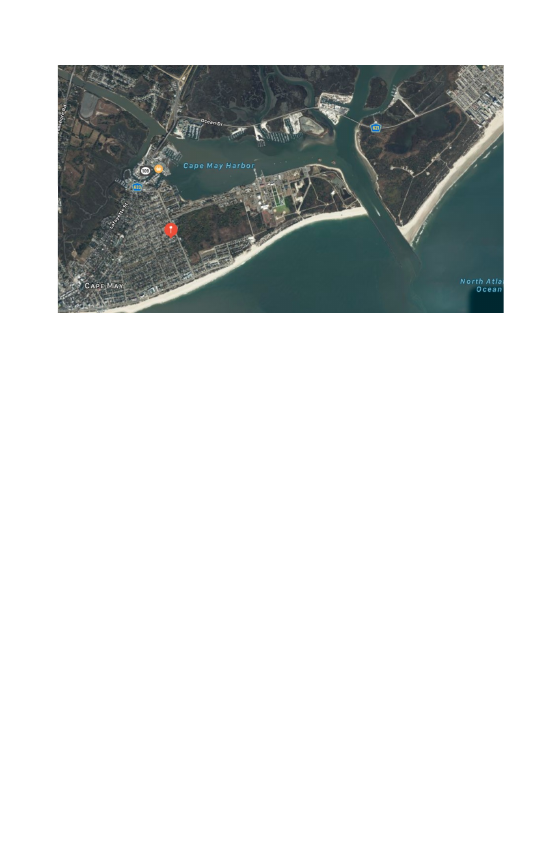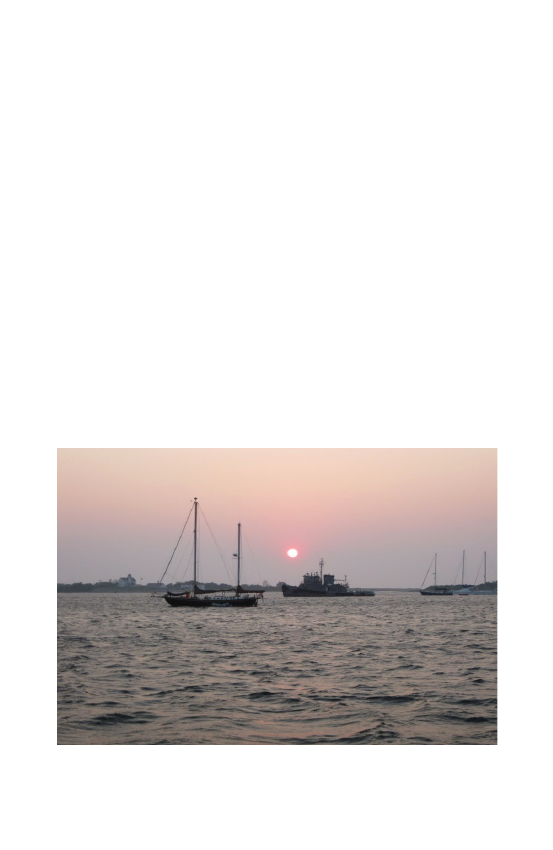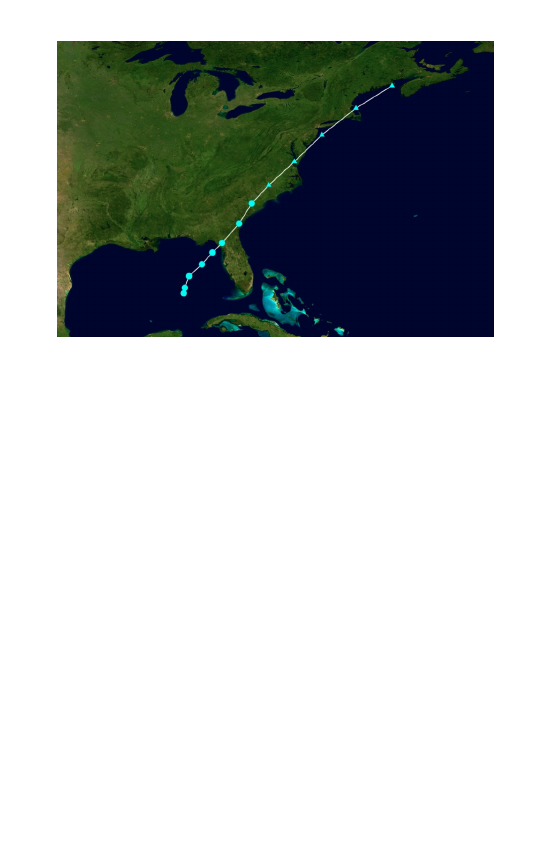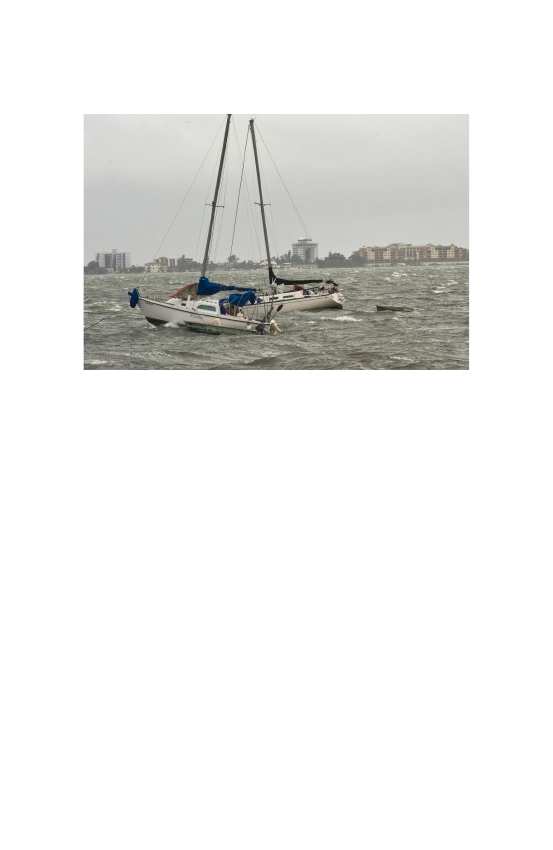
Chapter 2 Tropical Storm
Andrea 2013
Introduction
I had crossed the Atlantic on a dream run from
the Canaries southward and sailed through the
Caribbean towards Cuba. Denny joined me for
Christmas to cruise some of the islands. After
she flew home, I continued sailing west.
Following a great time in Cuba, I left Hemingway
Marina with another cruiser, Balvenie, to sail to
Florida. It was quite a crossing with very strong
winds, but the Gulf Stream pushed us north.
The nights were dark and rainy at times. I had
connection problems with the autopilot and had
to hand steer for hours. In the end I hove-to
and slept for 90 minutes. I finally made it to
West Palm Beach, where I and four others
cleared into the USA.
From there, I headed north via the Intracoastal
Waterway to Norfolk and then out into the
expansive waters of Chesapeake Bay, including
Annapolis and Baltimore. I traversed the
Chesapeake and Delaware Canal going east and
sailed south towards the open Atlantic. This
1

required navigating the many sandbanks in this
gulf, then rounding Cape May before I could turn
north towards New York City.
The Storm
It was June, five days into the hurricane season,
so I had to watch out for hurricanes forming in
the Gulf and moving north. This wasn't what I'd
planned for, and I found myself caught right in
the path of one coming north along the coast I
was sailing. While not the worst storm the USA
had experienced, such as Andrew, it still packed
quite a punch.
Here is how I rode out that storm.
I needed rest after two days of steaming
through the canal and south down the Delaware
Bay with all its sand shoals. I navigated through
the narrow entrance into what's called a harbour,
though it's more like an enclosed river mouth
with a bay stretching southeast to the town.
2

I dropped anchor inside the bay and fell asleep.
Upon checking the weather forecast, I
discovered I was right in the path of an Atlantic
hurricane forming south and travelling north up
the coast.
I pulled up the anchor to seek out a marina for
shelter but only found one with no space but at
least water and diesel. I filled all tanks to
capacity and left to re-anchor, having learned
that the shoreline, both sea and land, had quite
shallow water.
This location was ideal for riding out any storm.
The bay wasn't wide or long, so big waves
wouldn't form, and the narrow, protected
3

entrance would prevent Atlantic storm swells
from rolling in.
I dropped anchor with ample room aft and let
out 75 m of my 10 mm chain. I checked that
the rest would flow easily and ensured the join
to the nylon rode was secure and free-flowing.
There was a hive of activity at the Coast Guard
Training Centre abeam of where I'd anchored.
Recruits stowed everything movable and doubled
the lines on the few vessels in their dock. With
all canvas well secured along with everything on
my deck, I prepared a good meal and settled
into bed, setting the alarm for midnight when
the Tropical Storm was due to arrive.
4

Here's an extract from Wikipedia regarding this
storm:
"The first tropical cyclone and named
storm of the annual hurricane season,
Andrea originated from an area of low
pressure in the eastern Gulf of Mexico
on June 5. Despite strong wind shear
and an abundance of dry air, the storm
strengthened while initially heading
north-northeastward. Later on June 5,
it re-curved northeastward and
approached the Big Bend region of
Florida. Andrea intensified and peaked
as a strong tropical storm with winds at
65 mph (56 knots) on June 6. A few
hours later, the storm weakened
slightly and made landfall near
Steinhatchee, Florida later that day. It
began losing tropical characteristics
while tracking across Florida and
Georgia. Andrea transitioned into an
extra-tropical cyclone and moved along
the East Coast of the United States."
5

Yes, I was right in its path as it moved north,
but I was well prepared. I got a few hours'
sleep, but just before midnight, the wind started
from the southeast. With ample room astern, I
undid the snubber and let out all 100 m of chain
from the locker. The nylon took the strain
around the capstan.
The wind rose steadily. Thankfully, there was a
short fetch, so the waves were quite small.
Then came the rain and more wind. I let out
another 20 m of nylon and started the engine,
putting it in gear at idle to take strain off the
anchor as I attempted to stay in one spot.
At the height of the wind, I had the engine in full
ahead with the anchor straining to keep Malua in
6

position. From the cockpit, I watched the
anchor alarm as we weaved back and forth with
winds in the high 40 knots. The rain and noise
were disconcerting, not that I had anyone to talk
to. All vessels except one appeared to be
holding their positions. A large yacht started to
drag towards the seashore beach but thankfully
stopped just short, its anchor presumably
catching on something.
Around 4:00 am, the winds veered to the
opposite direction (northeast), signalling time to
up anchor and re-anchor with more room off my
stern. This was challenging, as I had to gauge
how the anchor chain was coming in from the
cockpit while pressing the up-anchor button and
steaming forward against the waves and wind.
I'm sure I put strain on the windlass, but
eventually, the anchor appeared over the bow. I
steamed into the wind to drop it in a good
position with sea room off my stern, letting out
75 m of chain again. The anchor set on the first
attempt, and I was once more stationary with
the Vesper Marine anchor watch set.
From about 5:00 am until dawn, with rain
continuing all this time, I alternated between
sitting in the cockpit with the engine running and
watching the anchor alarm below deck. As light
7

broke, the rain and wind eased, allowing me to
relax and have breakfast.
I wasn't going anywhere for a few days until the
open ocean calmed down, so I went ashore and
walked around. It's amazing how quickly one
forgets the challenges of cruising.
The next stage was to enter the Hudson River
and the Big Apple.
Was that a magical moment on Malua?
I then cruised north to New York, up to Rhode
Island then south again to The Chesapeake
where Malua was on the hard for the winter. I
returned to sail south through the Panama canal
and cross the Pacific to home in Australia. The
pacific storm is in the next chapter.
8







